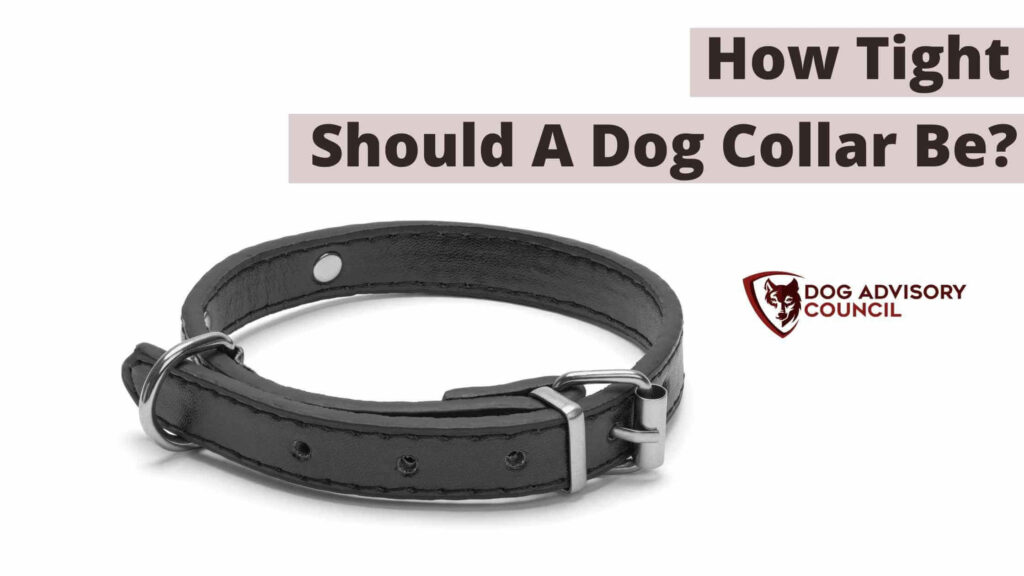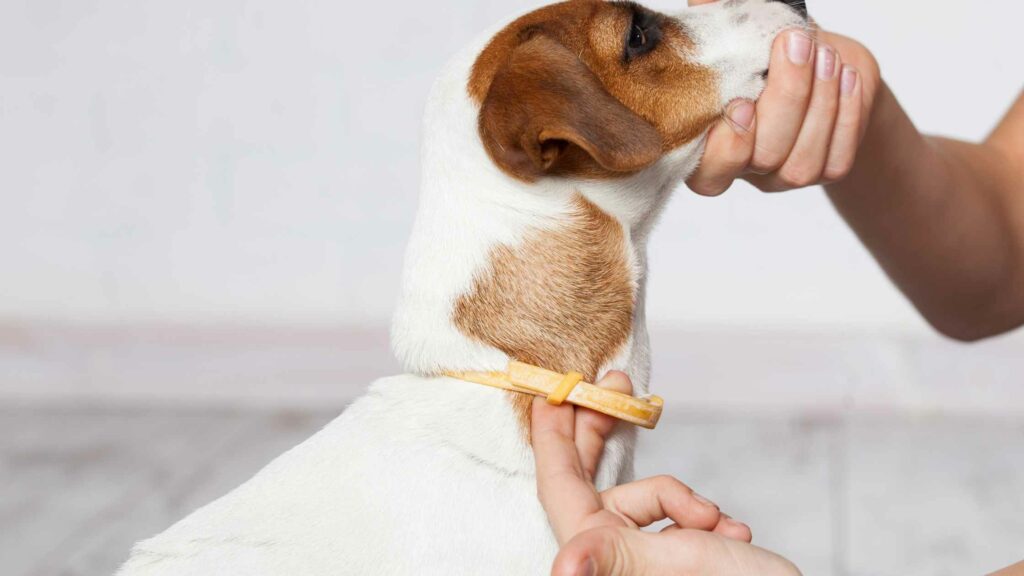
Feeling worried about whether your dog’s collar is too tight or too loose? Are You wondering how tight should a dog collar be? Don’t be. Below is everything you need for just the right fit.
The general rule for a well-fitting dog collar is that it should be tight enough that your dog can’t slip out of it but not so tight that they are uncomfortable. In most cases, you know that your dog collar is at the right tightness level if two fingers can fit comfortably between the collar and your dog’s neck. If you have a large dog, you’ll want to be able to slip four fingers between the collar and their skin.
How do I know if my dog’s collar is too tight?
It’s our greatest fear that our furry friend’s collar is too tight. So, even if we do the finger test and it comes out okay, here are some other ways that you can double-check to make sure that your dog’s collar is, in fact, not too tight or too loose.
- Your dog is constantly picking at it
- Your dog’s skin and fur are irritated
- They are making straining sounds
That last one sounded a little scary, right? Yeah. Unfortunately, it can happen. As we’ll discuss a little later, a tight collar can cause damage to your dog, so this is why having a properly fitted collar is very important.
The first two signs tell you that your dog’s collar is too tight but not so tight as to cause any damage to their long-term health. If you notice either or both of these signs, you’ll want to take that as a note to check the fit closely and loosen it.
If your dog’s reactions go away after you loosen it just slightly, you can bet that the reason for it was, in fact, a too-tight collar! Remember that the finger test is meant as a guideline only. Go by your dog’s obvious discomfort, even if the finger test came back okay!
Can a collar damage a dog’s throat?
As we hinted above, an ill-fitting collar can damage your dog’s throat. There are a few forms that this can take. Including:
- Irritation or the skin and fur
- A muscle injury to the neck
- A trachea injury
The first point is external damage only. Their fur may fall out and need space and relief to grow back properly. Their skin may also get irritated and cause lumps or raw, dry skin. This may need treatment, especially if there’s blood or something to make you think your dog has an infection.
A muscle injury on the neck is possible if your dog is so uncomfortable that they are constantly twisting their neck muscles around to make their collar looser and more comfortable. Over time and with stress from the collar itself, your dog can easily injure their neck, making it possible to have an actual muscle injury. This can cause pain and discomfort for your dog.
A trachea injury would be a temporary or permanent injury to the trachea in the throat. This would be most common if your dog pulls on a collar on their leash that is already too tight. This would need to be diagnosed by a vet.
Can collars cause tracheal collapse?
It’s rare for a collar to cause a total trachea collapse, but it’s technically possible. The reason for the rarity of this kind of complication is that pet parents would notice a trachea injury long before it would get to the point where it could cause a tracheal collapse. The exception is if your dog is straining and pulling on their leash and does it so much that their trachea collapses.
They will need emergency vet care, so any time you notice your dog struggling to breathe or similar, get them to a vet as soon as possible!
How tight should a slip lead be?
A slip lead or slip collar circles the neck and pulls the collar tight the more pressure the lead or leash puts on. It’s effectively a choke collar and common with pet parents trying to leash-train their dogs, particularly stubborn ones.
This collar will be looser on their neck, slipping down to their shoulders. But when it pulls tight, it’ll be tight enough to create pressure on their neck and then put more pressure on it.
A slip collar can cause strangulation, so a semi-slip collar (one that only pulls a collar tight, but not too tight) is much safer and limits strangulation and any other injuries we discussed above.
How loose is too loose for a dog collar?
A loose collar is going to be dangerous, too. If your dog can slip their head through the collar, or they can get a leg partially through it, it’s too loose. This can cause injury to your dog, so ensure you get it just right.
How many fingers should fit under a dog’s collar?
For small and medium dogs, you’ll want to be able to slip two fingers under your dog’s collar so that they are against your dog’s neck but not pressing against them. If you have a large or giant dog breed, you’ll want to ensure you can fit four fingers comfortably under your dog’s collar.

Where should a dog collar sit?
This is a great question! Your dog’s collar will be pulled by gravity, so you’ll want to work with that. Measure and size your dog’s collar to sit on the lower neck, above the shoulder blades. This is where you should do the finger test!
Can a tight collar cause a dog to cough?
A tight collar, especially if they are straining on a lead or a leash, can cause your dog to gasp, cough, and hack. You’ve probably heard these sounds before if you’re in the process of leash training your puppy.
How can I keep my dog’s collar from slipping off?
If you’re growing frustrated with your dog slipping out of their collar, you’ll want to consider changing collar types. Sometimes a dog is “between sizes” in one collar type, so switching to the other type may help you get that “just right” fit to keep your dog wearing their collar.
For example, consider the difference between adjustable and belt buckle collars. The former type has an adjustment ring that allows you to loosen or tighten the collar as needed. These are newer types that you can find in microfiber and LED designs. You can make tiny adjustments to help fix the “stuck between sizes” problem.
Where can I get help with collar fitting?
If you need help getting your dog’s collar to fit just right, especially as they’re growing up and need adjustments every few weeks, you’ll want to consult a vet and/or a groomer. Both professionals can make suggestions as your dog ages, gets more muscle mass, and starts to grow their adult coat.
In short
To help your dog get just the right fit, you’ll want to aim for fitting two fingers under your dog’s collar (four fingers for large dogs) comfortably without straining. You’ll also want to use signs like noticing skin irritation or fur damage, letting you know that the collar is too tight. An ill-fitting collar can cause health concerns; ensure you get the right fit and consider changing collar types or asking your vet or groomer for help if you need it.
A properly fitted collar will be essential if you want to help your dog enjoy their best life, especially on walks. These tips will help you get it right!
If you know someone who is struggling with this, consider sharing this with them!
